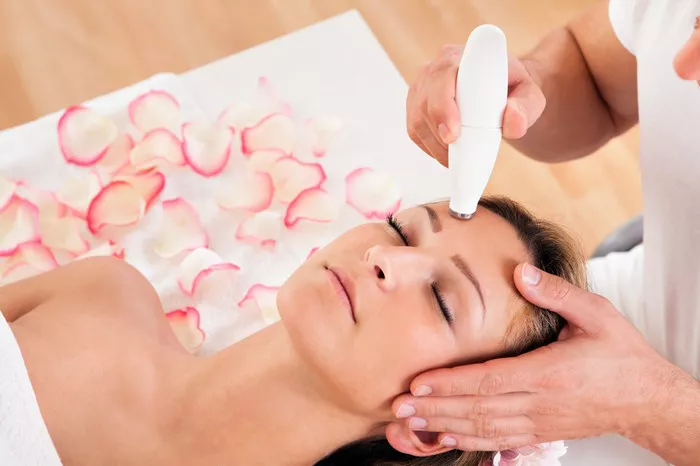Dark spots, also known as hyperpigmentation or age spots, can be a common skin concern that many individuals seek to address. These spots are often the result of excessive melanin production in specific areas of the skin and can be triggered by factors such as sun exposure, hormonal changes, and skin injuries. Microdermabrasion is a popular cosmetic procedure that exfoliates the skin’s surface to improve its texture and appearance. But can it effectively remove dark spots? In this article, we will explore the potential of microdermabrasion in addressing dark spots, how it works, and its limitations in treating this particular skin concern.
Understanding Dark Spots
Before delving into the role of microdermabrasion in treating dark spots, it’s essential to understand what causes these skin blemishes. Dark spots are characterized by the following:
Hyperpigmentation: Dark spots occur when certain areas of the skin produce an excess of melanin, the pigment responsible for skin color. This excess melanin can create patches or spots that appear darker than the surrounding skin.
Types of Dark Spots: There are various types of dark spots, including freckles, sunspots (solar lentigines), melasma, and post-inflammatory hyperpigmentation (PIH). Each type may have different triggers and characteristics.
Common Causes: Common causes of dark spots include sun exposure, hormonal changes (such as during pregnancy or while taking birth control pills), skin injuries, and inflammation from conditions like acne.
Microdermabrasion: What Is It?
Microdermabrasion is a non-invasive cosmetic procedure that uses a specialized device to exfoliate the topmost layer of the skin, known as the stratum corneum. This exfoliation process aims to remove dead skin cells, unclog pores, and stimulate collagen production. Microdermabrasion can be performed by a licensed skincare professional or using at-home devices.
How Does Microdermabrasion Work?
During a microdermabrasion session, the practitioner or device utilizes tiny abrasive particles or a diamond-tipped wand to gently sand away the outermost layer of skin. This process is often painless and typically takes around 30 to 45 minutes. Here’s how microdermabrasion works:
Cleansing: The treatment area is thoroughly cleansed to remove makeup, dirt, and oil.
Exfoliation: The practitioner uses the microdermabrasion device to exfoliate the skin’s surface, removing dead skin cells and encouraging cellular turnover.
Suction: Simultaneously, the device uses suction to collect the exfoliated skin cells and promote blood flow to the treated area.
Hydration: Some microdermabrasion procedures include the application of hydrating serums or moisturizers to nourish the freshly exfoliated skin.
Microdermabrasion and Dark Spots: Can It Help?
Microdermabrasion is primarily known for its ability to improve skin texture, reduce the appearance of fine lines and wrinkles, and minimize pore size. While it can offer benefits to the overall appearance of the skin, its effectiveness in treating dark spots is somewhat limited. Here’s what you need to know:
Superficial Treatment: Microdermabrasion targets the outermost layer of the skin, which means it primarily addresses surface-level issues. Dark spots often originate in deeper layers of the skin, such as the epidermis or dermis, where melanin is produced. As a result, microdermabrasion may have limited access to the root cause of dark spots.
Uneven Results: Microdermabrasion can lead to uneven results when addressing dark spots. It may lighten the surface of the spots temporarily, but the pigmentation often returns over time.
Best for Mild Hyperpigmentation: Microdermabrasion may be more effective in treating mild hyperpigmentation, such as freckles or very light sunspots. For more stubborn or deeply rooted dark spots like melasma or PIH, other treatment options may be more appropriate.
Combination Approach: In some cases, skincare professionals may recommend combining microdermabrasion with other treatments, such as chemical peels or topical lightening agents, to address dark spots more effectively.
Sun Protection Is Key: Regardless of the treatment chosen, sun protection is crucial when dealing with dark spots. Sun exposure can exacerbate hyperpigmentation, so wearing sunscreen daily and minimizing sun exposure can help prevent dark spots from worsening.
Conclusion
Microdermabrasion is a cosmetic procedure that can improve the overall texture and appearance of the skin, but its effectiveness in removing dark spots is limited. While it may temporarily lighten the surface of dark spots, it often does not target the underlying causes or deeper pigmentation. Individuals with mild hyperpigmentation may find some benefit from microdermabrasion, but for more stubborn or deeply rooted dark spots, consulting with a dermatologist or skincare professional for a tailored treatment plan is advisable. Combination approaches that include other treatments and a commitment to sun protection are often more successful in addressing dark spots effectively.


